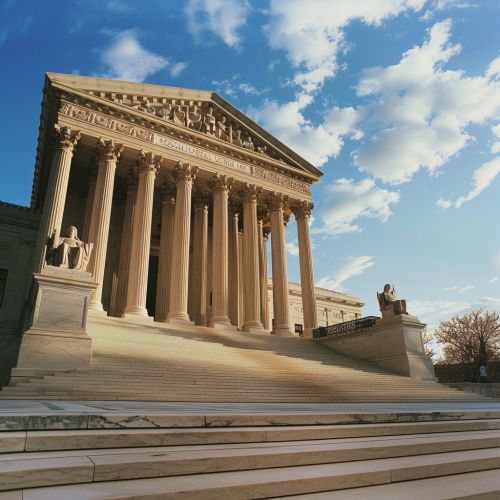New York Times Co. v. Sullivan
Background
The case of New York Times Co. v. Sullivan is a landmark decision by the United States Supreme Court that established the actual malice standard, which must be met for press reports about public officials to be considered defamation and libel. This standard requires that the plaintiff in a defamation or libel case prove that the statement in question was made with knowledge of its falsity or with reckless disregard for the truth. The case is pivotal in the context of First Amendment protections of freedom of speech and freedom of the press.
Case History
Initial Incident
The case arose from an advertisement published in the New York Times on March 29, 1960, which criticized the police department of Montgomery, Alabama, for its treatment of civil rights activists. The advertisement, titled "Heed Their Rising Voices," contained several inaccuracies. L.B. Sullivan, the Montgomery Public Safety Commissioner, felt that the criticism of his subordinates reflected on him, even though he was not mentioned by name.
Legal Proceedings
Sullivan filed a libel suit against the New York Times and four African American ministers who were listed as endorsers of the advertisement. Under Alabama law at the time, Sullivan did not have to prove that he had been harmed; and a defense claiming the advertisement was truthful was not available unless the defendants could prove the truth of every statement. Sullivan won a $500,000 judgment in the Alabama courts.
Supreme Court Decision
Arguments
The New York Times appealed to the United States Supreme Court, arguing that the judgment violated the First Amendment. The case was argued on January 6, 1964, and the decision was delivered on March 9, 1964. The Court's opinion was written by Justice William Brennan.
Actual Malice Standard
The Supreme Court unanimously reversed the judgment of the Alabama courts. Justice Brennan's opinion emphasized that the First Amendment protects the publication of all statements about the conduct of public officials except when statements are made with actual malice. Actual malice was defined as knowledge that the information was false or published with reckless disregard of whether it was false or not.
Impact on Defamation Law
The ruling significantly altered the landscape of American defamation law, especially concerning public officials and public figures. By requiring proof of actual malice, the Court provided robust protections for the press, encouraging uninhibited, robust, and wide-open debate about public issues.


Subsequent Developments
Extension to Public Figures
In subsequent cases, the Supreme Court extended the actual malice standard to public figures, not just public officials. This was seen in cases such as Curtis Publishing Co. v. Butts and Associated Press v. Walker. These decisions further solidified the protections for the press under the First Amendment.
Criticism and Support
The actual malice standard has been both praised and criticized. Proponents argue that it is essential for protecting free speech and a free press, allowing for vigorous debate on public issues without the fear of crippling defamation suits. Critics, however, argue that it makes it too difficult for public officials and public figures to protect their reputations against false statements.
Legal and Social Implications
Influence on Journalism
The decision in New York Times Co. v. Sullivan has had a profound impact on journalism in the United States. It has allowed journalists to investigate and report on public officials and public figures without the constant threat of defamation suits. This has led to more aggressive and investigative reporting, which is seen as a cornerstone of democratic society.
Global Influence
The principles established in New York Times Co. v. Sullivan have also influenced defamation law in other countries. While the actual malice standard is unique to the United States, the case is often cited in discussions about the balance between protecting reputation and ensuring freedom of speech.
See Also
- First Amendment
- Curtis Publishing Co. v. Butts
- Associated Press v. Walker
- Defamation
- Freedom of the Press
